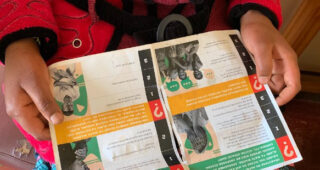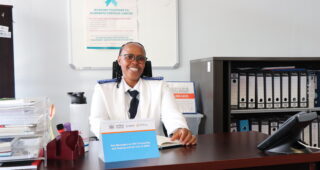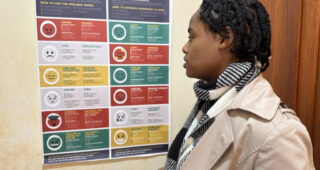Taking Action
Is the problem that we can’t end AIDS in children and adolescents—or that we won’t? And if we don’t end AIDS in children, adolescents, and young women, can we end AIDS at all?
These are the foremost questions that came to mind as I participated in AIDS 2020 Virtual. Throughout the conference, I was struck by the lack of attention to children and adolescents. While there are bright spots around meaningful youth engagement and encouraging innovations, it is time for the global health community to ask ourselves some hard questions about what is truly preventing us from achieving our goals for HIV prevention and treatment among children and families.
The recent UNAIDS update highlights the dire situation for kids affected by HIV globally.
We can’t talk about the “finish line” when we’re consistently failing to meet every mile marker on the path that was set to gauge our progress.
This report is a clear warning about the immediate threat to youth worldwide and a concerning signal about the future of the epidemic.
At the same time, innovations around promising diagnostics and therapeutics continue to evolve. Long-acting injectable prevention medicines are on the horizon, point-of-care early infant diagnosis has proven to be a game-changer for rapid diagnosis and initiation of infants onto treatment, and child-friendly formulations aiming to close the gap between adult and pediatric treatment options are increasingly available.
These advances deserve recognition, yet, we must confront the reality that even the best treatments and innovations will not be successful until they are scaled up to reach communities in urgent need.
Leadership from young people with contemporary experience will be the difference in developing programming that tangibly impacts lives. EGPAF was proud to host a session featuring two accomplished young people, Dee Mphafi and Brian Ahimbisibwe, who inspire me every time I hear about the remarkable work they are doing.
Additionally, EGPAF launched “AIDS-Free Generation Z: A Call to Action for Improvising Youth-Focused HIV Programming,” which affirms that if we meaningfully engage young people, let scientific evidence guide us, and commit to the fight, we can achieve an AIDS-free generation. Adolescents should be involved in youth-tailored programming from design to implementation.
We must listen to youth voices not only at conferences but in their own communities where the real work is being done.
I echo the sentiment of WHO’s Dr. Tedros Adhanom Ghebreyesus when he stated, “It is an outrage that there is still a lack of optimal HIV medicines with suitable pediatric formulations,” in his opening remarks to the COVID-19 conference, emphasizing that the goal of ending new pediatric infections is still far from reach.
AIDS 2020 brought into sharp focus how quickly COVID-19 has threatened decades of progress in the global HIV/AIDS response and underscores the ongoing systemic and racial inequality that fuels pandemics like COVID-19 and HIV in marginalized communities.
Dr. Martina Penazzato also reflected on the opportunities that COVID-19 reveals for reaching children and adolescents, presenting a compelling way forward for pediatrics. We would do well to heed her advice to “act, research, and innovate.”
With all of this in mind, we must now turn AIDS 2020 discussions into actions and not settle for slogans like “leave no one behind” when the latest data shows that children are being left behind. Change is required to reverse the unacceptable trajectory we are on. We must deliver on our declarations of progress.
Further complacency will cost countless young lives.
Chip Lyons, CEO and President
Global
Adolescent Identification, Care & Treatment; Community Mobilization; COVID-19; Maternal & Child Health; Pediatric HIV Diagnosis, Care & Treatment; Point-of-Care Early Infant Diagnosis; Policy & Advocacy; Prevention of Mother-to-Child Transmission; Strengthening Local Capacity



